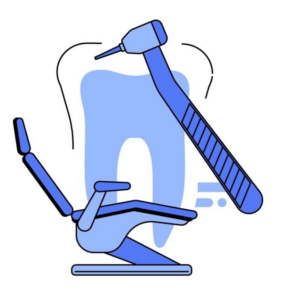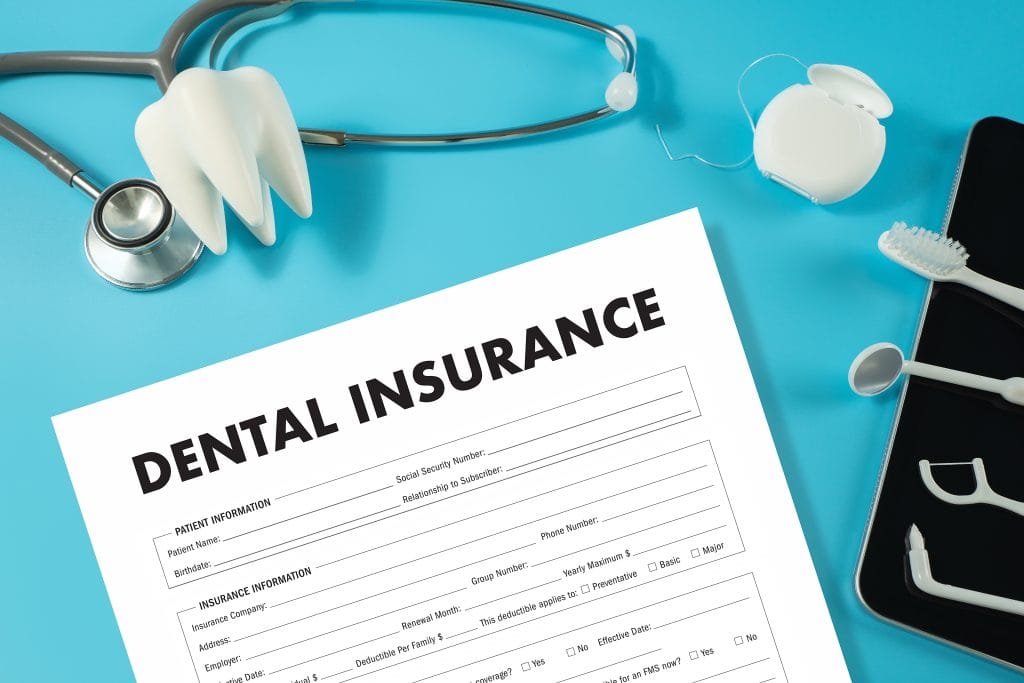Last updated on February 27th, 2024 at 05:43 pm
 By Jeffrey M. Blumberg, COO, MGE
By Jeffrey M. Blumberg, COO, MGE
This article is part four of a five part series on how to increase practice profitability and manage overhead. To view the first three parts, please go to:
Managing Your Overhead and Profitability, Part I, What is Your Overhead?
Managing Your Overhead and Profitability, Part II, Overhead Guidelines
Managing Your Overhead and Profitability, Part III, Payroll Expense in a Dental Practice
In last week’s article, we covered the overhead category that usually causes more trouble than all others combined – payroll. We looked at the reasons your payroll percentage could go out of whack and some potential solutions.
This week, we’ll continue to look at a couple of other overhead “trouble spots,” and we’ll also cover associate compensation, along with how it relates to your payroll percentage.
Compensating Your Associate
If you’ve read the prior three installments of this newsletter, you’ll know that:
- The first thing you should do to reduce your overhead percentage and increase profitability (barring the presence of any unusually ridiculous, wasteful expenses) is to increase productivity and collections.
- Your payroll percentage should not exceed 22.5%.
- This 22.5% does NOT include you as the owner/doctor, or any associates you might have.
- It does include all of your other staff (administrative and clinical, part-time and full-time).
- Ideally, a solo practitioner who’s been in practice for at least seven years, has paid off their practice loan and isn’t carrying a huge amount of debt for build-out and equipment should be running between 50.6% and no more than 60.6% overhead. And if it’s lower than 50.6%, that’s OK too!
This brings us to the subject of associates.
If you have questions about how to find, interview, pay and integrate an associate, and the like, I’d recommend you read Dr. Winteregg’s Web letter articles on the subject All About Associates, Part I and Part II.
When it comes to profitability and expense, there are a few things about associates to keep in mind that will monitor the impact they might have on your profitability.
1. If you add an associate, your production should increase.
 Now, some offices add associates to free the owner/doctor up to manage or present treatment. If you have that type of an arrangement, then this would not apply. This idea refers more to the conventional model, where you add an associate to free up your booked out schedule. Moving the fillings, less productive procedures, single unit crowns and possibly endo to an associate’s schedule should create more time on your schedule to be more productive. Instead of booking that four-unit bridge out for two weeks, you get to do it in a couple of days. Two things should happen when adding an associate in this manner: a) Your associate should become productive and b) by freeing your schedule up, you should become more productive. A solo-practitioner doing $80,000 per month ($60,000 him or herself and $20,000 in hygiene) should see a jump in their production (to say $70-$80,000 or more) with an additional $30-$40,000 from the associate. This takes an $80,000 per month practice and turns it into a $120,000 – $140,000 per month practice (i.e., $70-80,000 owner doctor, $30-$40,000 associate and $20,000 hygiene).
Now, some offices add associates to free the owner/doctor up to manage or present treatment. If you have that type of an arrangement, then this would not apply. This idea refers more to the conventional model, where you add an associate to free up your booked out schedule. Moving the fillings, less productive procedures, single unit crowns and possibly endo to an associate’s schedule should create more time on your schedule to be more productive. Instead of booking that four-unit bridge out for two weeks, you get to do it in a couple of days. Two things should happen when adding an associate in this manner: a) Your associate should become productive and b) by freeing your schedule up, you should become more productive. A solo-practitioner doing $80,000 per month ($60,000 him or herself and $20,000 in hygiene) should see a jump in their production (to say $70-$80,000 or more) with an additional $30-$40,000 from the associate. This takes an $80,000 per month practice and turns it into a $120,000 – $140,000 per month practice (i.e., $70-80,000 owner doctor, $30-$40,000 associate and $20,000 hygiene).
This setup doesn’t work if you add an associate and give them work, while you sit idle. If you’re scheduled to work this morning, but there is nothing on your schedule but a denture reline, while your associate is booked up – then something is wrong. The primary purposes of bringing in an associate are to a) To improve patient care by getting them in quicker and b) to free you up to become more productive. Sure, there’s also emergency coverage and the like, which is great. But, if your production stays the same same (or worse, goes down) to “keep the associate busy,” it defeats the main reason you would add one in the first place.
2. The associate must produce enough to make employing them worthwhile.
Associate pay plans can vary. The primary plans I’ve seen are:
a. Percentage of production or collections.
b. Straight per diem amount.
c. Per diem plus some type of production bonus.
d. Per diem plus production bonus after a certain production level is hit.
The primary variance in a-d above is the amount of the per diem and the percentage paid.
Regardless, if you’re paying an associate a per diem of $500 for a 17-day month to produce $15,000, it’s not going to work very well, just on numbers alone.
Depending on your locale, fee structures can vary wildly, so I’m not going to throw out that an associate must produce $X amount to make it worthwhile. I leave that up to to you to decide. Minimally, I would say that regardless of their pay plan, paying them anything over 30% of their collections (I guess you could push that to 35% if you really wanted to) doesn’t make much sense. Using the figures above ($500/day to produce $15,000 on a 17-day month), you’ll see that you’d be paying them 56.7% ($500/day X 17 Days = $8,500. $8,500 divided by $15,000 = 56.6%). To make it worthwhile, that $500 a day or $8,500 a month associate would at least have to collect $28,333 ($8,500 is 30% of $28,333).
3. If your associate has no case presentation duties, their compensation percentage should reflect this accordingly.
How an associate is paid should be based on what they are expected to do. If you’re presenting all of the treatment and they get to come in and produce all kinds of high-end dentistry, 30% of their production or collections is way too high.
On the other hand, if the associate is expected to present treatment and is given the simpler treatment to free up your schedule, then 30% might be justified.
Ensure you factor all of this in when formulating associate pay. Why? Acquiring new patients costs money. So do dental supplies and the assistant you have to hire to work with them. Ultimately, you’re on the hook for all of these expenses.
4. Your associate should be paid on collections.
I get some odd looks at times when I mention this at a seminar. To me it’s pretty simple. You can’t pay your associate (or staff and bills) with production. You can only pay them with real money – collections. Basing it off of anything else, such as production can open you up to any number of issues, such as the time factoring in write-offs for PPOs and finance plans, so you’re not paying for what you didn’t collect.
Again, for more information on the whole associate picture, I recommend Dr. Winteregg’s articles titled All About Associates, Part I and All About Associates, Part II.
Other Overhead Trouble Spots
As we covered two issues ago, the top six overhead categories that I’ve observed cause the most trouble are: Payroll, Advertising and PR, Loans/Leases, Supplies (Dental and Office), Lab & Credit Cards.
We covered payroll last issue. To finish this issue off, we touch on Loans/Leases and Supplies (office and dental).
Loans & Leases
From time to time, especially with expensive equipment, you need to take out a loan or do some kind of a lease. Fine. It goes with the territory.
 Here’s where you can get into trouble doing this:
Here’s where you can get into trouble doing this:
- If you’re a newer office and your production and collections are not up to snuff.
- If you build out, expand, add rooms, move, etc., expecting this to magically make you more productive – and that bump in production never comes.
- This is the most common issue – you purchase a cool new piece of equipment that is not really justified by your current level of productivity.
1 and 2 above are pretty easy to think with.
If you find yourself in #1, you need to become more productive. This might include increasing the number of new patients and learning how to present treatment more effectively. For information on how to get more new patients click here. To find out how to improve case acceptance, click here.
Number 2 above, expanding/adding more facility (rooms, space, etc.) hoping to become more productive, really depends on your situation. If you’re busting at the seams with patients, this can work well if done right. For example: You have a two-chair office, with a full-time hygienist in one of them and both you and the hygienist are booked out six weeks. You decide to add a chair. Well, in this instance, that extra chair could add at least an additional $100,000 or more per year – or more. It’s a good move.
Conversely, let’s take a doctor who has a nice four chair office that’s paid for. He or she decides that moving to a prettier five chair space will “raise revenues,” and provide a happier work environment. He or she is not overbooked, doesn’t need to add any additional providers, etc. The office, while productive, is not really growing and has collected the same amount the last two years. Well in this case, unless you get the place expanding, the primary things you’ll add with a move are debt and stress.
The new office is most likely more expensive and now you’ll have to add the debt service for it to your overhead. And, you’d better hope that revenues don’t go down. I write this as I’ve seen my share of doctors who move for no other reason than to move. There was nothing wrong with their location or physical plant and they expect that the half million dollars they take out in loans to build out and equip the new place will attract people because it’s pretty. This very rarely works out the way you might hope. Sure, you might eventually pay everything off – after seven years of unnecessary stress and ulcers.
The moral: Don’t do this unless a) you’re expanding and the need for space in the relatively close future (not ten years from now) is clear or b) you find an opportunity that you feel you shouldn’t pass up – i.e., owning your own space, etc., and even then, you should really crunch the numbers and be certain that it will work.
Number 3 above, purchasing new equipment that isn’t particularly justified by current productivity, is, as I wrote above, the most common of these issues. How does this happen? Let’s say you go to a trade show. You see some really cool piece of equipment that you desperately “need” and go ahead and lease or take out a loan for it. Need is the key word here. What’s the different between “need” and “want”? As a businessperson, “needing” something, would mean, in my opinion, that:
a) Not having it compromises clinical quality in some way, or adding it would really improve the level of patient care or
b) Having it would raise revenues and make you additional profit. And by raising revenues, I don’t mean just enough to cover the payment. If you purchase a piece of equipment and spend $1,200 to lease it every month, I would expect that having it would – at least – make you an additional $5,000 per month.
Look, I want you to have a beautiful high-tech office. I would hope that it’s everything you’d ever dreamed of. I don’t, however, want you stressed out financially because you’ve loaded up on equipment that’s hardly being used, or wasn’t really required to improve or maintain clinical excellence. Before buying something, really examine whether it’s a “need” or a “want.” If it’s a “want” item, see if you’re really in the position to swing it financially, at your current rate of revenue, not hoped for future revenue increases. Chances are, that piece of equipment you “want” now, will eventually become a “need” as your office grows.
Supplies (Office and Dental)
The problem with supply expenses is one of control.
I wouldn’t suspect that you would leave your office checkbook lying around and allow just any employee to write a check for whatever expense he or she thought necessary. Even then, while not completely secure, one of the fail-safes with a check is it requires your signature.
With the way supply accounts are set up (either directly with your supplier or attached to your credit card), the potential liability is someone can just order what they want, or feel is needed without authorization.
This area becomes problematic when no hard budget has been set. In other words, your Lead Dental Assistant (or whoever does your dental supply orders) would ideally know that the supply budget for this month is X amount and no more.
When he or she does the supply orders for the month, they are responsible for keeping within your budgeted amount and are not authorized to exceed it.
You could even, if you wish, carry over whatever money they didn’t use a prior month to the following month. This really gives the person in charge of ordering the ability to have some fun with it. They can save money here and there to buy some particular item or items that the office has been looking to get.
The plus here is that you allow the individual to be responsible and give them a degree of power and control. You would also have to set this up with a few conditions in mind:
- You can’t run out or run dangerously low on supplies that are needed to operate – i.e., you don’t want to have to call a colleague down the street to borrow impression material because not enough was ordered.
- If something expensive breaks (hopefully not due to poor maintenance or misuse) and you need to exceed budget, the person in charge of this should be able to come to you and sort it out to get the needed funds to handle it.
- If production jumps spectacularly one month or more, you may have to quickly adjust your budget, especially if you’re doing a lot of implants or crown and bridge. Implant supplies and impression material can be expensive.
- The supply budget you set must be REAL. Meaning, if you need $4,000 a month for supplies, don’t give your assistant a $2,000 budget and tell them to “figure it out.” That’s a recipe for disaster.
You could apply these same rules to your office supply accounts and whoever handles the ordering.
Well, that’s it for this week. Next week, we’ll wrap up the series with more on how to address our final troublesome overhead categories, along with a summary of steps to take based on your situation.
Next in this series is the article: Managing your Overhead and Profitability, Part V – Lab Bills, Advertising, Overhead Peculiarities and What to do Next.
Jeffrey Blumberg provides this general dental practice management advice to furnish you with suggestions of actions that have been shown to have potential to help you improve your practice. Neither MGE nor Mr. Blumberg may be held liable for adverse actions resulting from your implementation of these suggestions, which are provided only as examples of topics covered by the MGE program.

